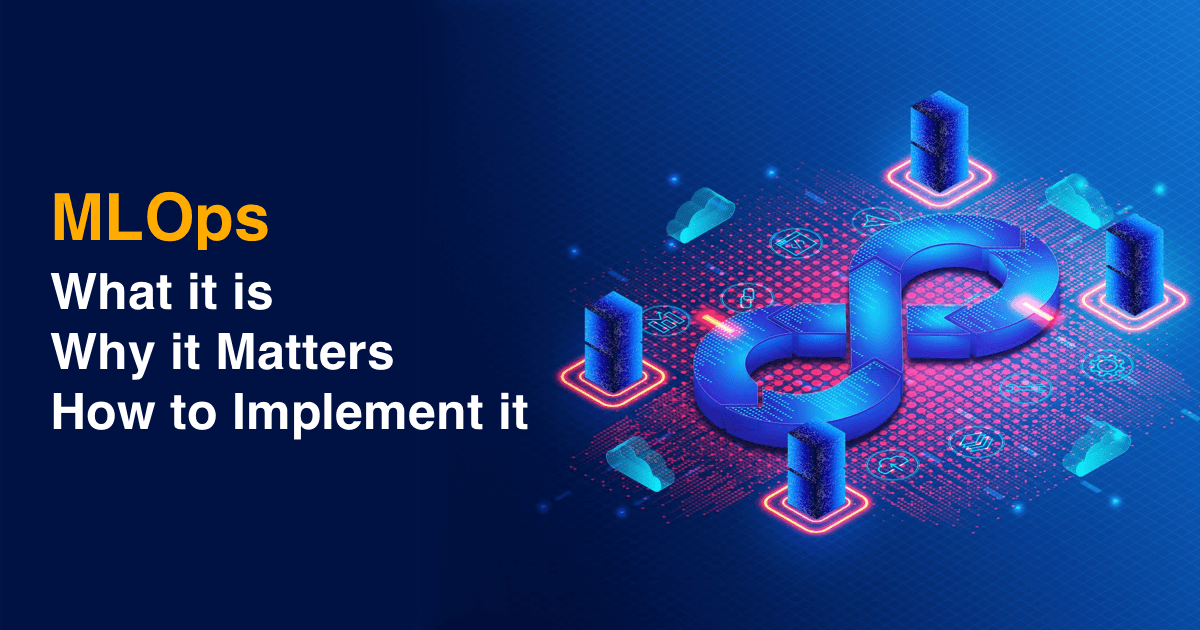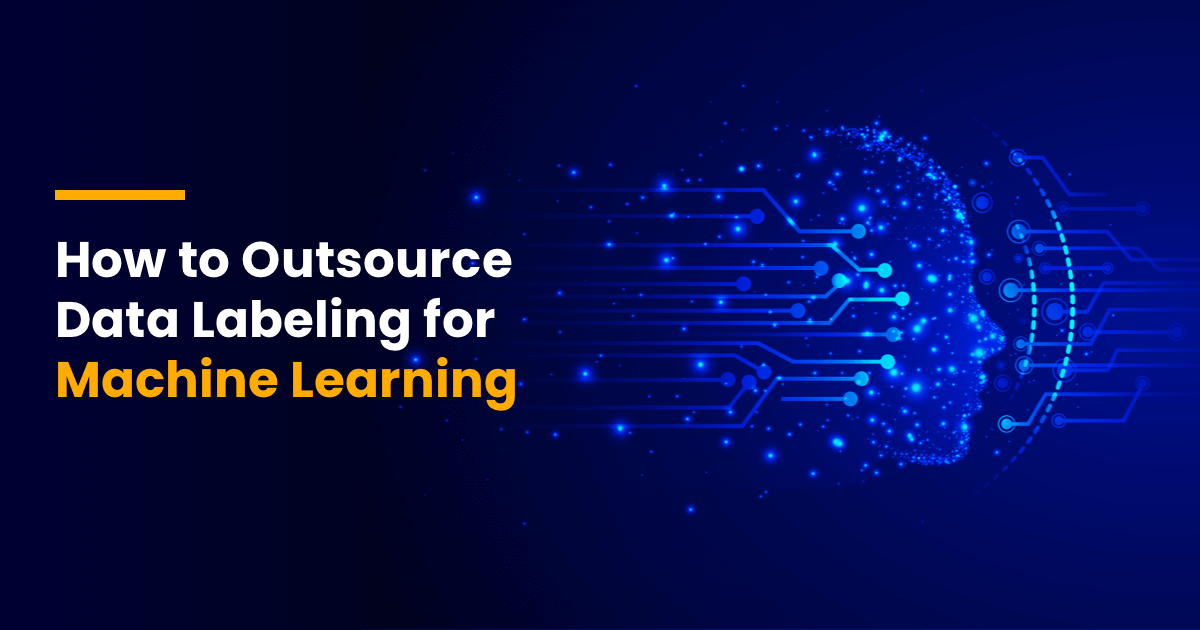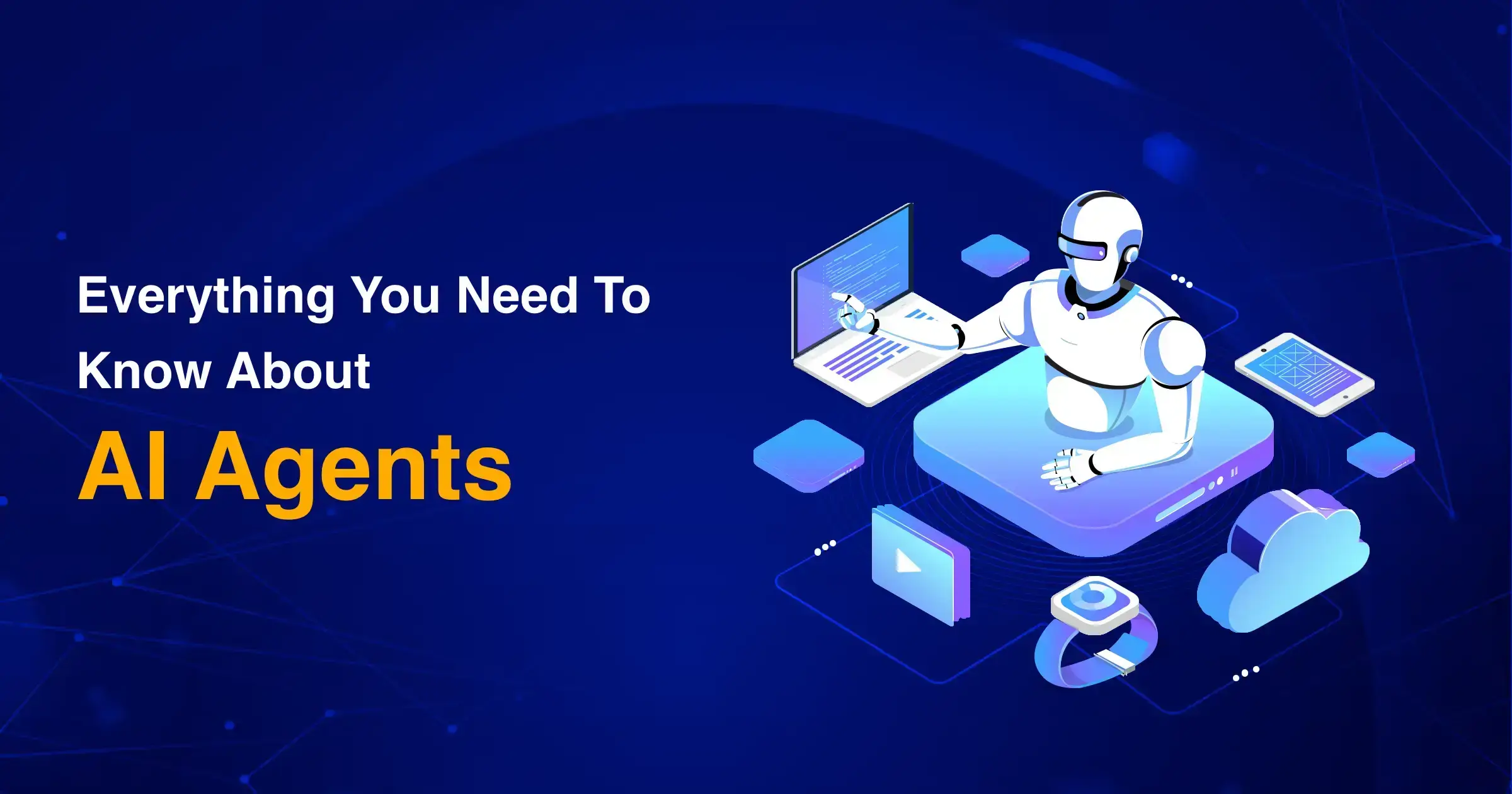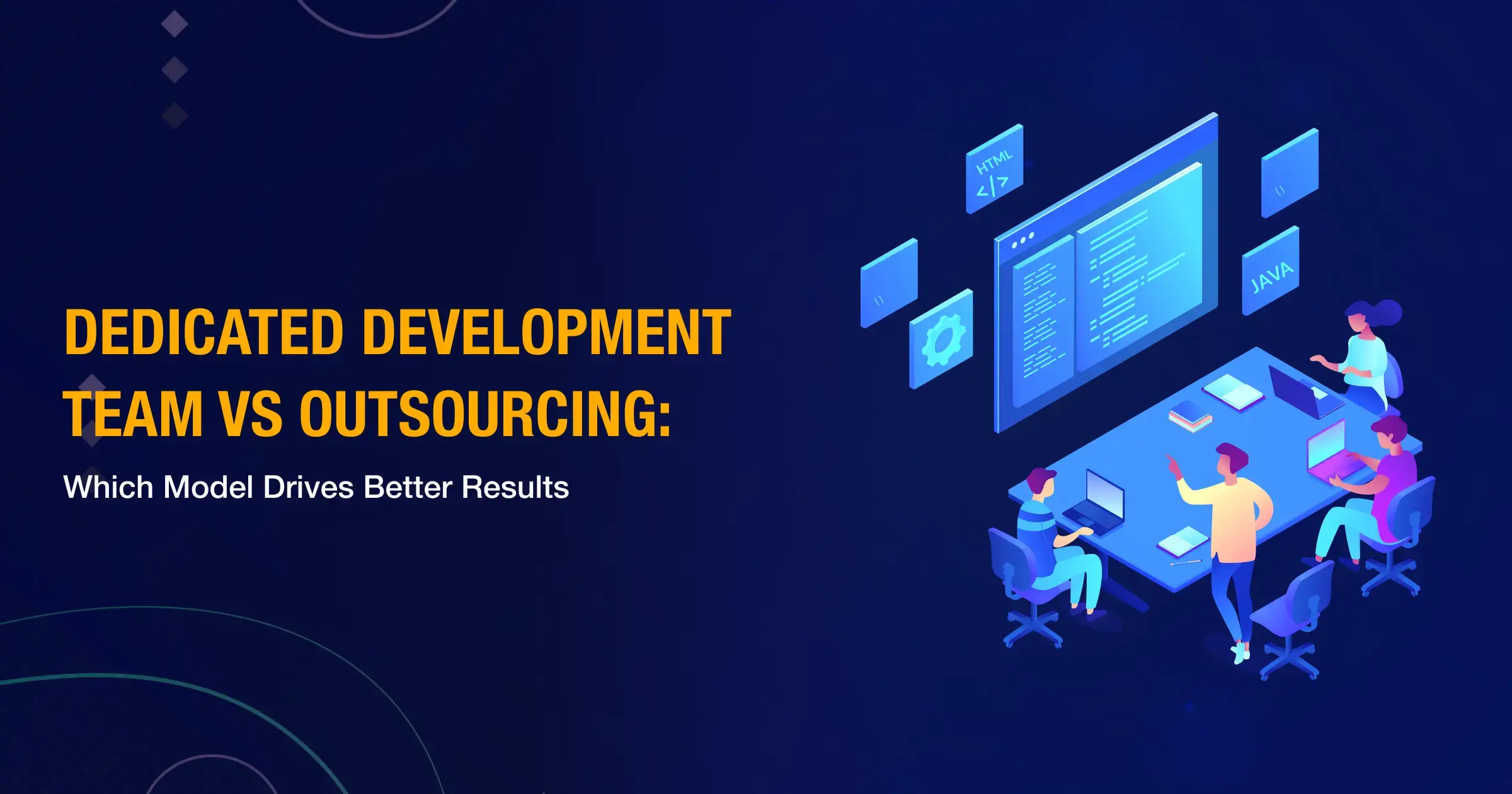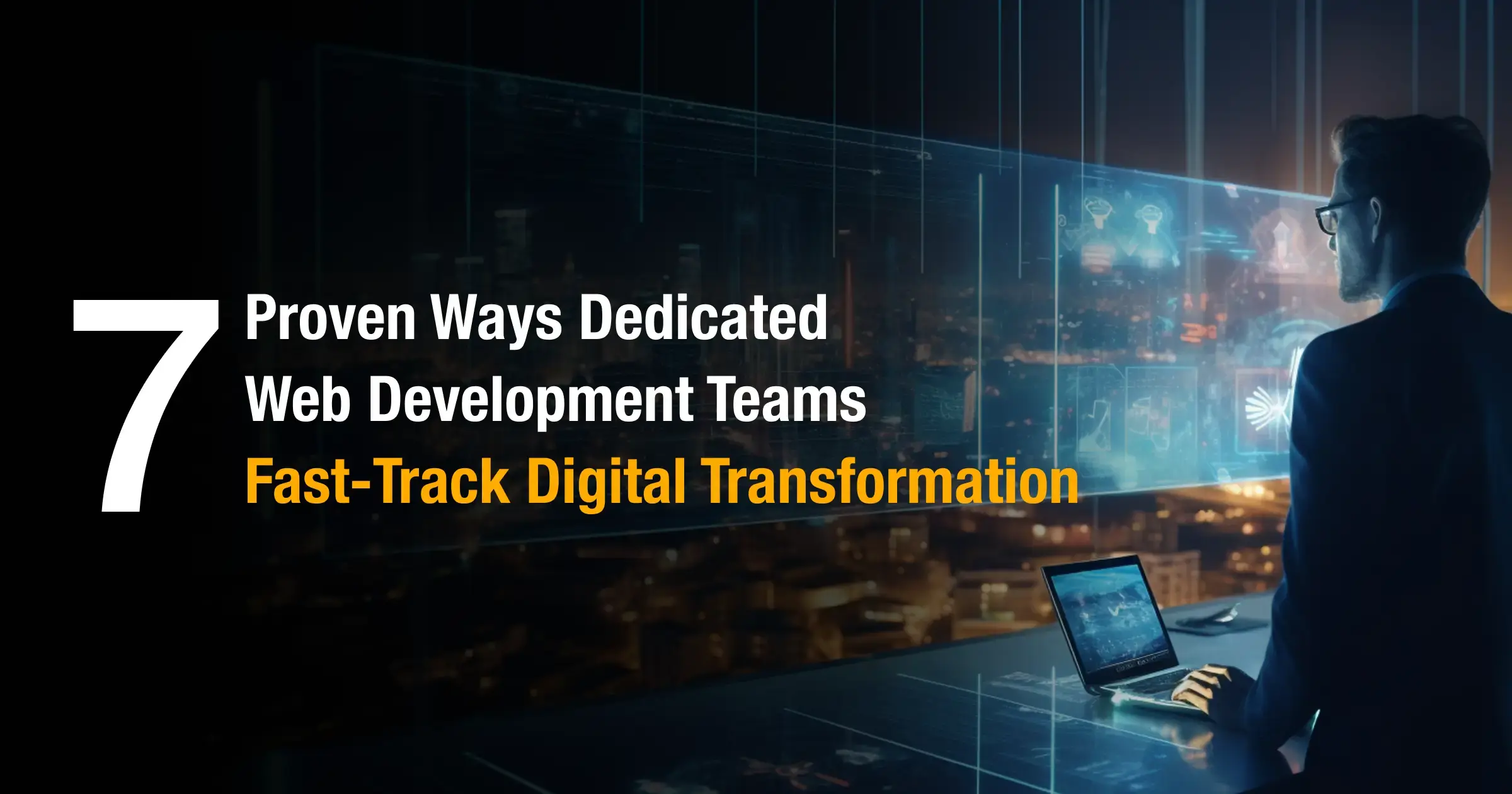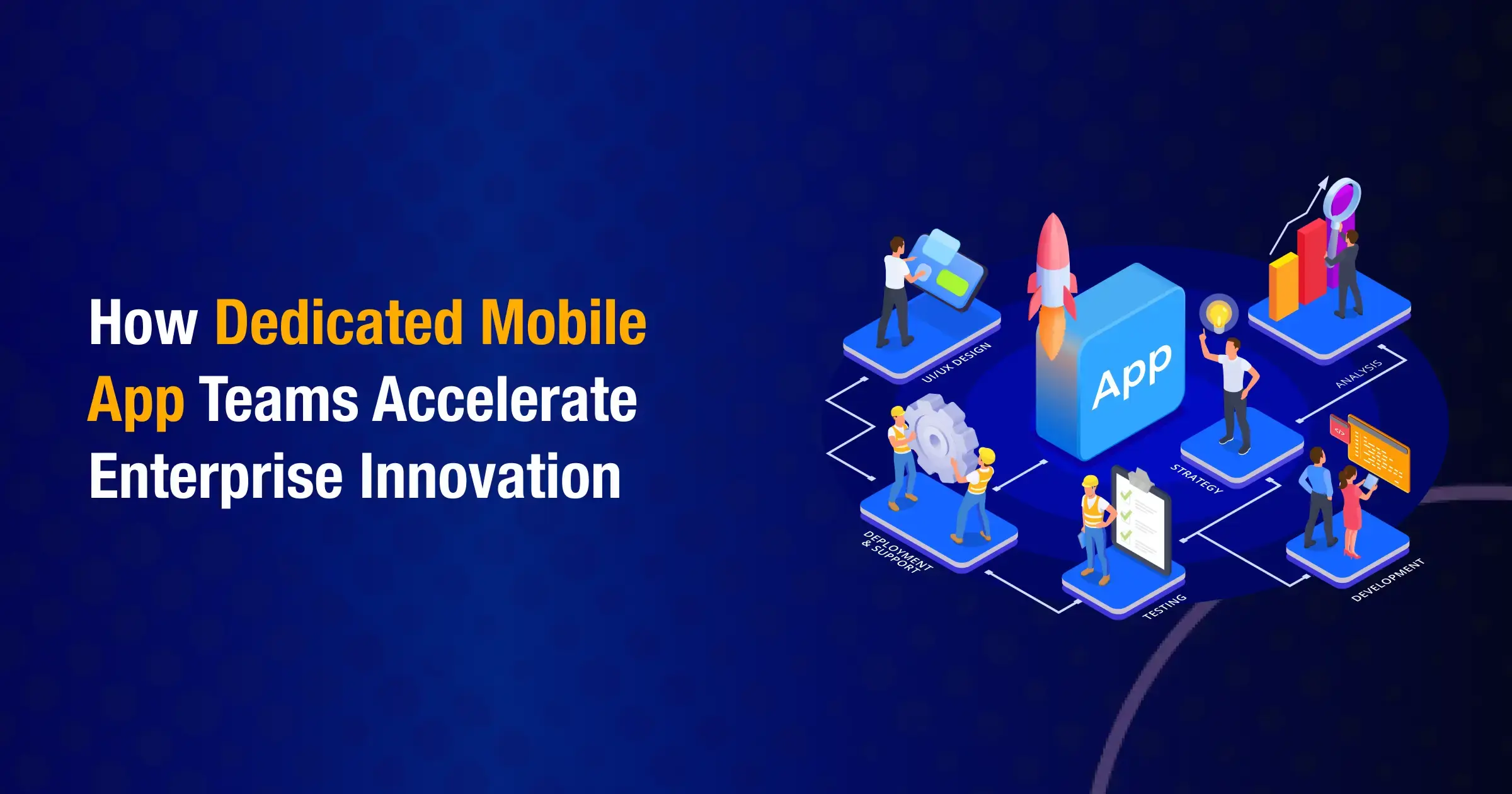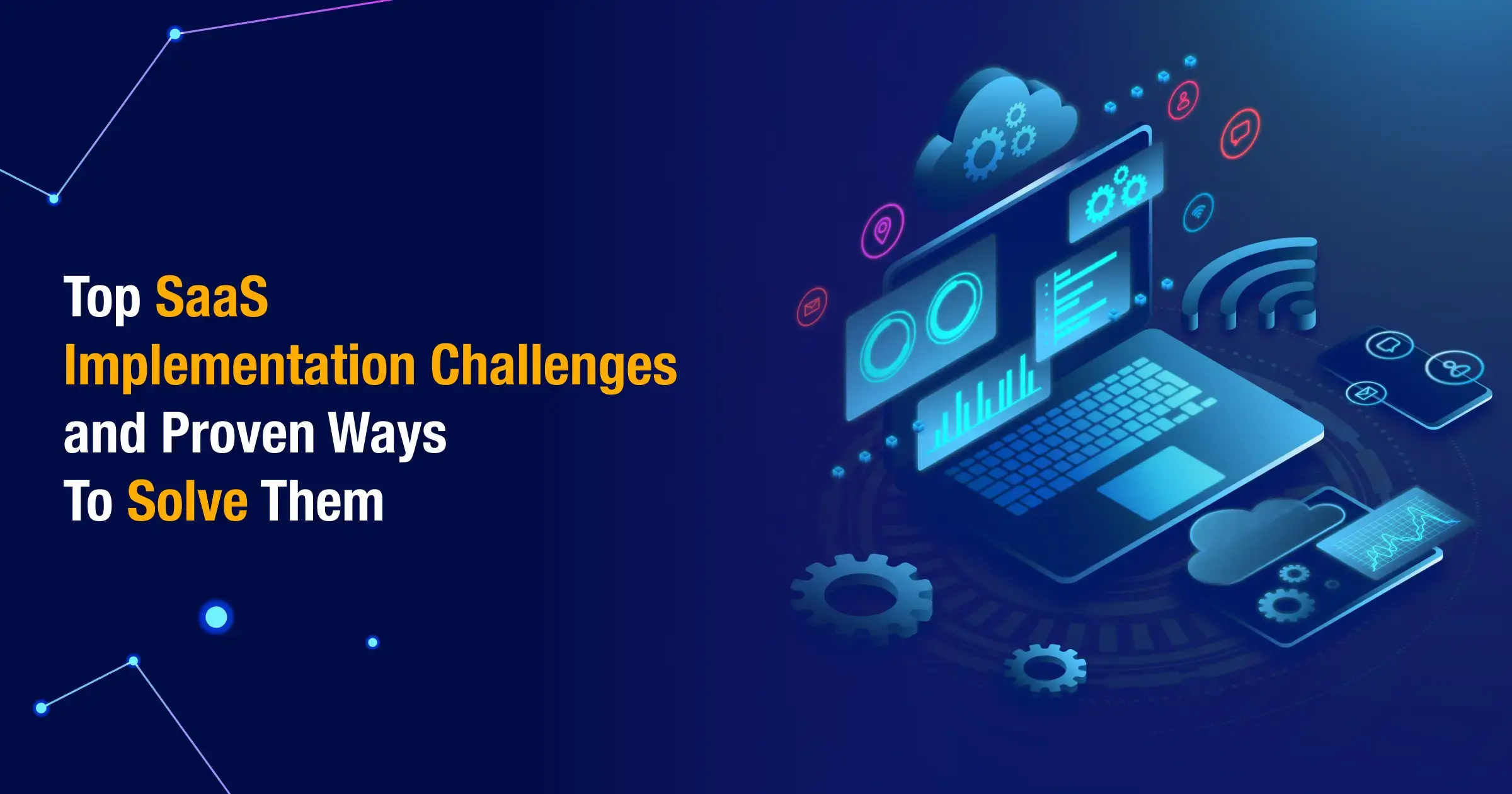
Overview
Machine learning finds its unique place in most of the businesses operating across different industries in our current times. Businesses use ML to predict trends, personalize services, and automate routine tasks, even critical business decisions.
However, just building an ML model is only half the work done. Why? It’s because many businesses focus on developing ML models, but a majority of them do not reach production.
The reason lies in inefficient managing, deploying, and maintaining these models. This is where MLOps comes in.
What is MLOps?
MLOps, in short, Machine Learning Operations, is a combination of different practices that essentially ensure there is a seamless development and deployment of ML models. It combines machine learning, DevOps, and data engineering to achieve that.
MLOps fundamentally streamlines the entire ML lifecycle, which ranges from data preparation and model training to model deployment and extended monitoring.
To put it simply, MLOps clears out any hindrances in the way and ensures ML models deliver real business value consistently.
Data scientists might come up with brilliant ideas based on which they developed machine learning models, but what use would come out of that if those models did not go to production? MLOps clears away silos and catalyzes the whole process from production to deployment of ML models.
The global MLOps market is projected to reach $5.9 billion by 2027 at a staggering CAGR of 41% according to MarketsandMarkets. This steep increase in its market value signifies that MLOps has been recognized as a game-changer in eliminating silos and improving efficiency.
To effectively function, MLOps streamlines constant updates, version control, model drift, and compliance issues, which otherwise can slow down the entire process.
MLOps benefits businesses in three key ways:
- Faster Deployment: Automates ML workflows, thus reducing time-to-market.
- Better Collaboration: It bridges the gap between data science, IT, and business teams.
- Improved Model Performance: Continuous monitoring makes sure the models are accurate and aligned with business goals.
MLOps vs DevOps
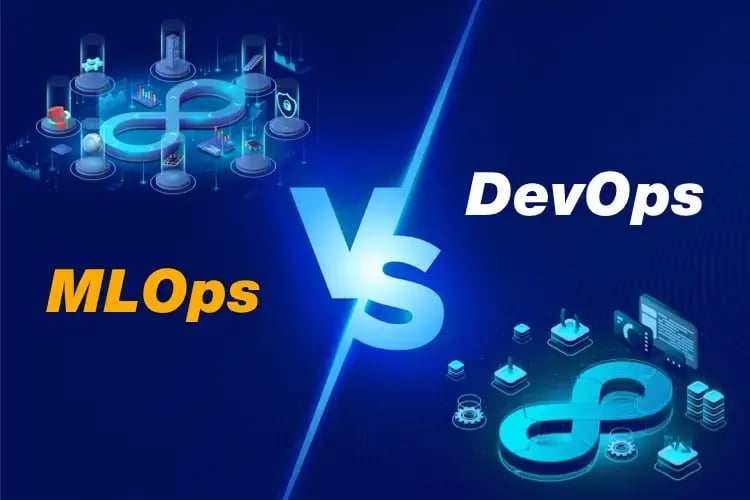
MLOps may seem similar to DevOps at the surface level, but these two have inherent differences both in terms of how they work and their end goals. Going further, let’s illustrate some fundamental differences between MLOps and DevOps.
Core Functionality
DevOps: The core functionality of DevOps is to monitor software development and deployment. It plays a pivotal role in ensuring seamless communication between different teams.
MLOps: On the other hand, MLOps is essentially a set of practices to ensure machine learning models are moved to production and then to deployment. But it doesn’t stop here. It is primarily concerned about data and ML models and ensures high quality data is available for ML models all the time.
Development Lifecycle
DevOps: The lifecycle management of DevOps is pretty much stable. It takes care of software development and deployment where its responsibility ends.
MLOps: However, the lifecycle is not that simple for ML models mainly due to the dynamic nature of data. Over time, ML models’ quality degrades due to input data pattern changes, also called data drift, and changes in real world situations, which is called concept drift. This necessitates MLOps to continuously monitor ML models’ production and training, and to supplement with retraining and re-deployment.
Versioning
DevOps: When it comes to versioning, DevOps handles version control primarily for source code with the use of tools like Git.
MLOps: MLOps, on the other hand, requires advanced and more nuanced versioning, including data versioning, model versioning, and pipeline versioning.
Testing
DevOps: DevOps focuses on testing practices like functional tests, unit tests, integration tests, and performance tests. These are essentially important for software applications to remain bug-free and function optimally.
MLOps: Testing approaches of MLOps are a bit complex and comprehensive. It validates data to ensure it is consistent. With model validation, MLOps essentially checks for accuracy of ML models and whether the results produced are biased. It also performs behavioral testing that primarily assesses how the model performs in real-world scenarios.
The below table further highlights the key difference between DevOps and MLOps:
| Criteria |
DevOps |
MLOps |
| Core Focus |
Code-centric |
Code + Data + Model-centric |
| Versioning |
Code versioning |
Code, data, model, and pipeline versioning |
| Testing |
Functional, integration, and performance tests |
Data validation, model validation, behavioral testing |
| Deployment |
Application deployment |
Model deployment, serving, retraining, CI/CD for ML workflows |
| Monitoring |
Application performance, error logs |
Model accuracy, drift detection, data anomalies |
| Compliance & Explainability |
Security, code compliance |
Model explainability, bias monitoring, audit trails |
AIOps vs MLOps
AIOps stands for Artificial Intelligence for IT Operations, while MLOps stands for Machine Learning Operations. Both terms are commonly interchanged often, yet they mean different things. However, both AIOps and MLOps complement each other.
The main functionality of AIOps is to utilize artificial intelligence and machine learning to automate several IT operations and improve their performance. Some use cases of AIOps include detecting system anomalies and accurately predicting outages.
On the other hand, MLOps purely focuses on streamlining the machine learning lifecycle. It ensures ML models are developed and efficiently moved into further stages of testing and deployment.
What are the Core Components of MLOps Framework
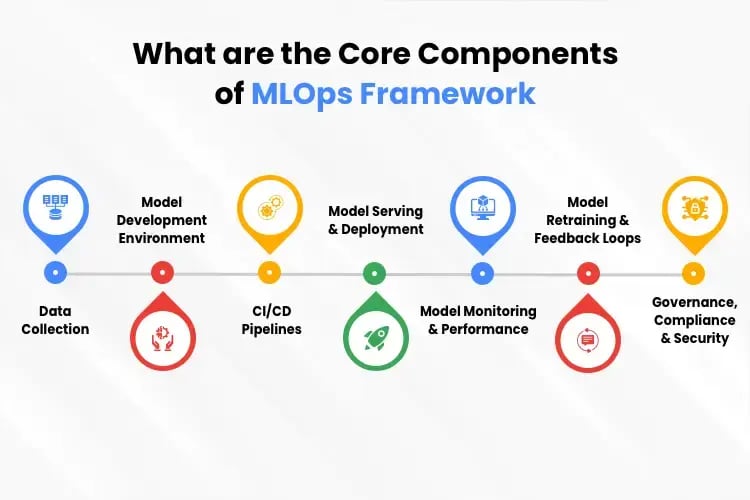
MLOps framework that ensures machine learning models move from development to production and deliver business value continuously. MLOps platforms consist of several key components that work together to manage the entire ML lifecycle. Let’s get into the MLOps best practices:
1. Data Collection
As we know already, data is the foundation of machine learning. Clean, consistent and versioned data means model accuracy and reliability.
- Data Pipelines: Automated systems to collect structured and unstructured data from various sources—databases, APIs, sensors, etc.
- Data Validation & Quality Checks: Identifies missing values, anomalies and inconsistencies to keep data intact.
- Data Versioning: Tracks different datasets that are used for training, testing and validation which ensures reproducibility.
- Feature Store: It is a centralised repository for storing, sharing and reusing engineered features across models and teams, saving time and reducing duplication.
2. Model Development Environment
Faster model development speeds up innovation and experimentation and ensures collaboration between teams.
- Collaboration Tools: It contains version control systems like Git that are integrated with notebooks and development platforms. This enables multiple data scientists to work on models simultaneously.
- Experiment Tracking: Tools to log parameters, datasets, code versions and performance metrics during experiments. They help to compare and reproduce results.
- Containerization: Using Docker or similar technology to package models and dependencies, which ensures consistency across environments.
3. Continuous Integration & Continuous Delivery (CI/CD) Pipelines
Automated CI/CD pipelines are crucial to reduce manual errors and further speed up deployment. They allow ML models to be updated without disruption.
- Automated Testing: Include unit tests, integration tests and model validation checks in the CI pipeline.
- Model Packaging & Versioning: Ensure each trained model version is documented and stored with its associated metadata.
- Deployment Automation: Automated deployment into production environments (cloud, on-premises, edge devices) using tools like Jenkins, GitLab CI/CD or ML-specific platforms.
4. Model Serving & Deployment
Models need to be accessible in real-time or batch mode for business applications to use them effectively.
- Model Serving Infrastructure: APIs, microservices or batch processing systems that expose models to applications.
- Scalability & Availability: Models to handle varying workloads without downtime using container orchestration tools like Kubernetes.
- Deployment Strategies: Blue-green deployments, canary releases, A/B testing or shadow deployments to minimize risks when rolling out new models.
5. Model Monitoring & Performance Management
Models can degrade over time due to data drift, changing business conditions or concept drift. Monitoring ensures models stay accurate and relevant.
- Monitoring Metrics: Latency, throughput, prediction accuracy and error rates in real-time.
- Data & Model Drift Detection: Shifts in input data distribution or significant drops in model performance.
- Alerting Systems: Automated notifications when performance thresholds are breached, so you can act fast.
6. Model Retraining & Feedback Loops
Models need to be retrained regularly with fresh data.
- Automated Retraining Pipelines: In this MLOps pipeline, systems that trigger model retraining when new data is available or when performance drops.
- Human-in-the-Loop (HITL): In some cases, human experts validate or correct model outputs, to improve future iterations.
- Continuous Feedback Collection: Real-world outcomes and feed them back into the model training process.
7. Governance, Compliance & Security
Businesses need transparency, compliance and data and model protection.
- Audit Trails: Data usage, model versions, changes and decisions for compliance audits.
- Model Explainability: Tools and techniques (e.g., SHAP, LIME) to explain model decisions, in regulated industries like healthcare or finance.
- Security: Encrypt data, secure APIs and protect models from attacks or unauthorized access.
What are the Business Benefits of MLOps
MLOps is indeed an innovative technological breakthrough that streamlines the entire machine learning lifecycle. However, its role is not simply to elevate the image of a business that implements MLOps. MLOps solutions actually provide value to businesses by unlocking several opportunities and clearing inefficiencies.
1. Faster Time-to-Market for AI Solutions
Machine learning development in traditional sense is time consuming. The main reason is often due to several manual processes, uncoordinated teams, and bottlenecks in deployment.
But MLOps addresses these challenges with automation and collaboration tools which streamline the entire ML lifecycle.
Businesses are now able to move models from development to production faster mainly because of continuous integration (CI) and continuous deployment (CD) pipelines in place.
This is often coupled with automated testing, versioning, and deployment which further accelerate the AI solutions delivery. This strategy helps businesses make use of market opportunities quickly and stay competitive.
2. Improved Model Reliability and Accuracy
It is a fact that machine learning models tend to degrade over time. This is mainly due to data drift, changing user behavior, or considerable shifts in the market. This necessitates a robust framework that monitors and manages this degradation. Because it could negatively impact businesses with poor decision-making based on outdated models.
MLOps platforms facilitate continuous monitoring of models in production environments, which helps track key metrics, anomaly detection and model retraining when needed.
This proactive approach keeps models accurate and reliable so business insights and automated decisions remain trustworthy and effective over time.
3. Cost Reduction through Automation
Manual ML processes involve repetitive tasks. This includes data preparation, model validation, deployment and monitoring. This manual approach over time tends to increase operational costs and may also cause human errors, correcting which is again a costly approach.
MLOps eliminates these inefficiencies as it automates the entire workflow from data ingestion to model retraining. Fewer manual interventions mean less labor costs, less errors and less downtime.
Plus, businesses are now able to reuse pipelines and components that help them optimize resource utilization and reduce overall costs.
4. Team Collaboration
Various teams need to collaborate for machine learning projects like data scientists, software engineers, DevOps teams and business stakeholders. But what if silos between these groups can block progress and misalignment?
To address this effectively, MLOps brings different teams together by defining clear workflows, standard tools and shared responsibilities. Version control systems, experiment tracking platforms and containerized environments come as a great help for better collaboration between different teams.
They simplify team collaboration, knowledge-sharing, and maintaining transparency throughout the ML lifecycle. Projects move faster and business objectives are better aligned with technical outcomes.
5. Scalability of AI
As businesses grow, their data and AI needs grow together. So, in order to scale up machine learning capabilities, manual efforts often prove to be inefficient or futile.
Here, MLOps provides a scalable infrastructure that grows with your business. Importantly, it does so without adding complexity. MLOps handles scaling seamlessly and efficiently. It makes it simple for deploying multiple ML models and integrating those models into different business units.
6. Compliance and Governance
Many industries, especially critical ones such as finance, healthcare, and legal need to comply with strict regulations around data usage. They also need to maintain model transparency and be accountable for decision-making. Without proper governance businesses can face legal penalties and reputational damage.
MLOps embeds governance into every stage of the ML lifecycle. It logs audit trails, ensures data privacy, manages model versioning and incorporates explainability tools. Businesses can demonstrate compliance quickly, respond to audits efficiently and build trust with regulators, customers and stakeholders.
7. Continuous Improvement through Feedback Loops
Markets and customer behaviour change day by day. Static ML models can’t keep up with these fast paced changes and may miss key business opportunities or degrade customer experience.
MLOps enables continuous feedback loops, collecting real world data and user feedback to retrain and refine models regularly. This way models evolve with business needs and businesses stay agile in a competitive world.
MLOps Lifecycle
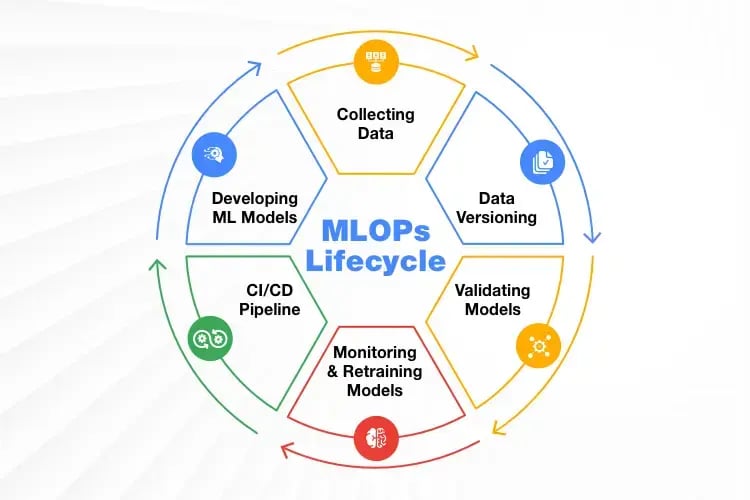
The MLOps lifecycle details each and every step that is crucial for ML models from production to deployment and beyond. Here, we will see how each step or process works.
1. Collecting Data
For any ML projects, the first and foremost step is to collect data. MLOps ensures data from various sources are collected and stored in a central repository to be used for ML model development.
As ML models rely on high quality data for efficient performance, MLOps makes sure to collect data from reliable sources.
2. Data Versioning
Once the data is collected, the next important step is to manage and organize it effectively. MLOps handles this through versioning datasets and creating reusable, standardized features, which are stored in a feature store.
This approach ensures that the data remains consistent and traceable throughout the project lifecycle. It also helps ML teams speed up the ML model development process.
3. Developing ML Models
Now that data preparation is over, the focus shifts to building and refining ML models. MLOps solutions help data scientists with designing, training, and fine-tuning of multiple ML models. For such purposes, it uses specialized tools to track every experiment.
This process promotes continuous innovation. It also helps in identifying which models deliver the best outcomes. MLOps then document all results and processes so that you can easily reproduce them whenever you need.
4. Validating Models
Thoroughly testing the performance of ML models is now an important step. MLOps takes care of validating models as it checks for accuracy, identifies if there are any biases, and conducts stress tests under various conditions. This is to ensure that the models meet the specific business requirements and also perform reliably in real-world scenarios.
5. CI/CD Pipeline
Once the model is tested and ready, the next step is deploying it efficiently. MLOps automates the entire process of model packaging, testing, and deployment with the use of CI/CD pipelines. This automation minimizes manual errors which could pose setbacks in deployment and further speed up deployment.
6. Monitoring and Retraining Models
The process does not get completed once you deploy the ML models. They require continuous monitoring, which holds the key to long-term success.
MLOps keeps track of model accuracy, latency, and usage. It also detects issues like data drift, model decay, or any other unexpected anomalies. MLOps, combining these practices, ensures the models stay reliable. It also ensures that the decisions of ML models stay accurate and relevant.
Whenever there is new data, MLOps makes sure the models are retrained and refined using feedback loops. With this, you can rest assured that your ML models are robust and shift to market trends and customer behaviors.
To Conclude
MLOps isn’t a flash in the pan but the foundation of successful businesses that are willing to adopt AI. As machine learning grows so does the need for scalable, secure and governed AI infrastructures.
Trends like AI governance, multi cloud and continuous model monitoring are emerging and MLOps is essential to be competitive.
Companies that get in early on MLOps will win in the long term. They’ll be able to scale faster, adapt to market changes quicker and have trustworthy AI systems. In short MLOps is the key to getting consistent business value from your AI efforts. Not just today but well into the future.
Frequently Asked Questions
What is MLOps in simple terms?
MLOps is like DevOps but for machine learning. It’s for managing, automating and streamlining the entire ML lifecycle from data collection to model deployment and monitoring.
What is the difference between MLOps and DevOps?
DevOps is for software development and delivery, MLOps is for building, deploying and maintaining machine learning models which involve data, model training and continuous monitoring.
Is MLOps the future?
Yes, we can say that. As more businesses adopt AI and ML, MLOps is going to be key to scalable, reliable and efficient machine learning.
What are key MLOps tools to use?
Some reliable MLOps tools include the following:
- MLflow
- Kubeflow
- TensorFlow Extended (TFX)
- Jenkins
- Docker
With these tools, you will be able to track experiments and procedures, manage ML models effectively, and even automate deployments.
Is MLOps only for large companies?
No, the benefits of MLOps are not restricted only to large-scale companies. Businesses of all sizes can benefit from MLOps. MLOps can be of use wherever companies aim to transform their operations with AI and ML, and importantly size or scale of the company does not matter.

